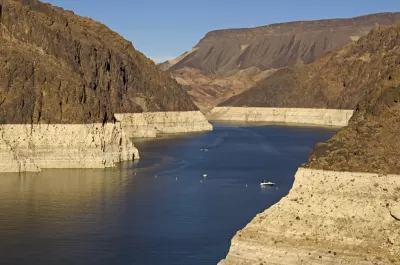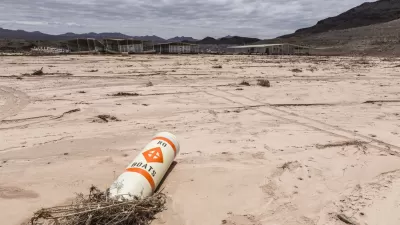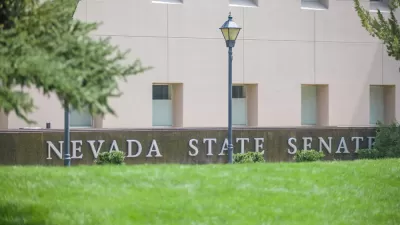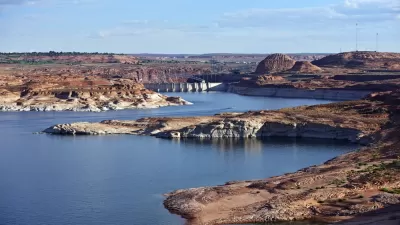Arizona will lose one-fifth of its water allotment from the Colorado River in 2022 as cuts from the river's Drought Contingency Plan take effect.

Ian James writes about how Arizona water officials are preparing to subsist on far less water than hoped in the coming years, as the megadrought along the Colorado River deepens and the relatively new Drought Contingency Plan (DCP) takes effect, determining how much water will be allotted to the seven states along the Colorado River watershed during lean water years.
"Lake Mead’s decline is expected to trigger substantial reductions in water deliveries in 2022 for Arizona, Nevada and Mexico. The largest of those cuts will affect Arizona, slashing its Colorado River supplies by 512,000 acre-feet, about a fifth of its total entitlement," explains James.
"While that will shrink the amount of water flowing to farmlands through the Central Arizona Project Canal, the state’s water managers said during Thursday’s meeting that they’re prepared and have plans ready to handle shortages over the next five years, even if Lake Mead continues to drop to levels that would bring larger cutbacks."
Ted Cooke, general manager of the Central Arizona Project (CAP), is quoted in the article saying that the DCP was crafted with the assumption that drastic conservation measures would eventually be necessary.
According to James, the state of Arizona's response will involve pumping extra groundwater for farmland in Pinal County, where cotton, hay, and other crops grow.
"Farmers in Pinal County hold the lowest priority for water from the CAP. Under a shortage, they’re in line to lose all that water. But the state’s plan will provide them with 'mitigation' water in 2022 that will amount to about a third of their previous supply," explains James.
This big feature story includes a lot more detail about the broader environmental context of the Colorado River watershed, as well as the consequences of the DCP for other states that rely on the river, like Nevada and California.
FULL STORY: Facing a Colorado River shortage, Arizona prepares for the pain of water cutbacks

Study: Maui’s Plan to Convert Vacation Rentals to Long-Term Housing Could Cause Nearly $1 Billion Economic Loss
The plan would reduce visitor accommodation by 25,% resulting in 1,900 jobs lost.

North Texas Transit Leaders Tout Benefits of TOD for Growing Region
At a summit focused on transit-oriented development, policymakers discussed how North Texas’ expanded light rail system can serve as a tool for economic growth.

Why Should We Subsidize Public Transportation?
Many public transit agencies face financial stress due to rising costs, declining fare revenue, and declining subsidies. Transit advocates must provide a strong business case for increasing public transit funding.

How to Make US Trains Faster
Changes to boarding platforms and a switch to electric trains could improve U.S. passenger rail service without the added cost of high-speed rail.

Columbia’s Revitalized ‘Loop’ Is a Hub for Local Entrepreneurs
A focus on small businesses is helping a commercial corridor in Columbia, Missouri thrive.

Invasive Insect Threatens Minnesota’s Ash Forests
The Emerald Ash Borer is a rapidly spreading invasive pest threatening Minnesota’s ash trees, and homeowners are encouraged to plant diverse replacement species, avoid moving ash firewood, and monitor for signs of infestation.
Urban Design for Planners 1: Software Tools
This six-course series explores essential urban design concepts using open source software and equips planners with the tools they need to participate fully in the urban design process.
Planning for Universal Design
Learn the tools for implementing Universal Design in planning regulations.
City of Santa Clarita
Ascent Environmental
Institute for Housing and Urban Development Studies (IHS)
City of Grandview
Harvard GSD Executive Education
Toledo-Lucas County Plan Commissions
Salt Lake City
NYU Wagner Graduate School of Public Service





























